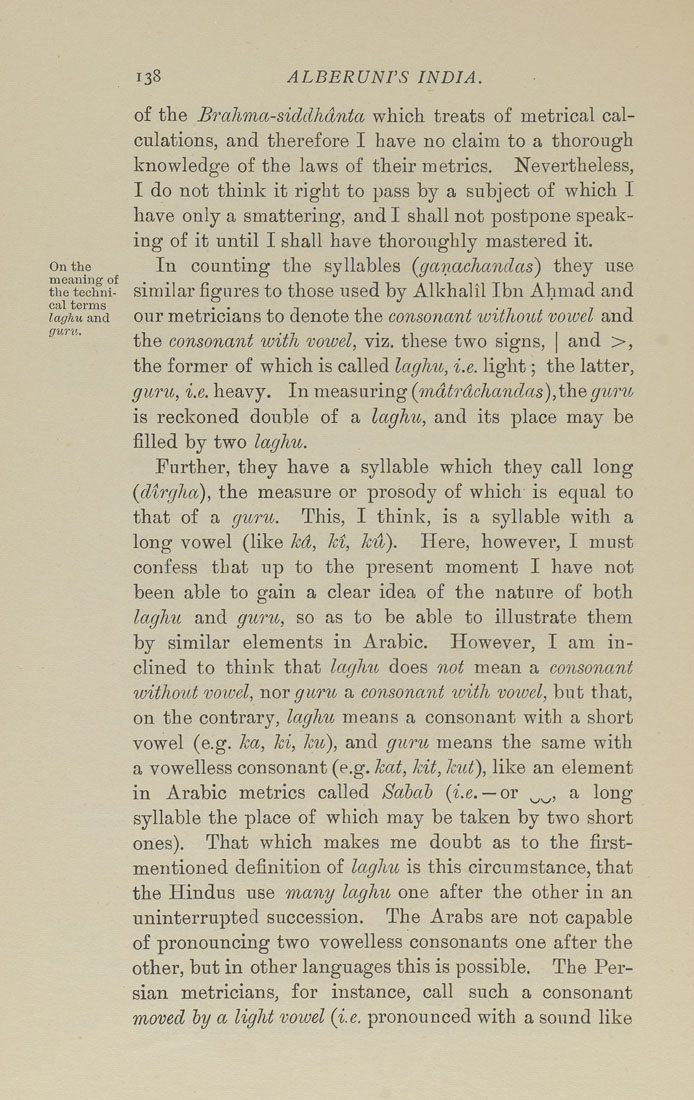guru.
138 ALBERUNPS INDIA.
of the Brahmasiddhdnta which treats of metrical cal¬
culations, and therefore I have no claim to a thorough
knowledge of the laws of their metrics. Nevertheless,
I do not think it right to pass by a subject of which I
have only a smattering, and I shall not postpone speak¬
ing of it until I shall have thoroughly mastered it,
Onthe In counting the syllables (ganachandas) they use
the teohni- similar figures to those used by Alkhalil Ibn Ahmad and
laghu and our mctriciaus to denote the consonant loithout vowel and
the consonant with vowel, viz, these two signs, | and >,
the former of which is called laghu, i.e. light; the latter,
guru, i.e. heavy. In measuring (mdtrdchaxidas), the guru
is reckoned double of a laghu, and its place may be
filled by two laghu.
Further, they have a syllable which they call long
(dirgha), the measure or prosody of which is equal to
that of a guru. This, I think, is a syllable with a
long vowel (like kd, ki, kil). Here, however, I must
confess that up to the present moment I have not
been able to gain a clear idea of the nature of both
laghu and guru, so as to be able to illustrate them
by similar elements in Arabic. However, I am in¬
clined to think that Iccghu does not mean a consonant
without vowel, nor guru a consonant with vowel, but that,
on the contrary, laghu means a consonant with a short
vowel (e.g. ka, ki, ku), and guru means the same with
a vowelless consonant (e.g. kat, kit, kut), like an element
in Arabic metrics called Sahah (i.e. —or ^^, a long
syllable the place of which may be taken by two short
ones). That which makes me doubt as to the first-
mentioned definition of laghu is this circumstance, that
the Hindus use many laghu one after the other in an
uninterrupted succession. The Arabs are not capable
of pronouncing two vowelless consonants one after the
other, but in other languages this is possible. The Per¬
sian metricians, for instance, call such a consonant
moved hy a light voivel (i.e. pronounced with a sound like
|








